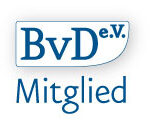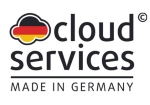Three pillars of security at idgard
In the modern business world, digital collaboration and data exchange are indispensable. The protection of sensitive information is always a top priority. When it comes to cloud solutions, it is important to choose a provider with whom business-critical data is in good – and above all secure – hands.
Longterm security commitment
As a subsidiary of TÜV SÜD, idgard has a long tradition of security. Our security commitment is based on three key pillars that ensure the highest levels of data security and data protection. This allows you to work efficiently in the cloud without compromising the security of your data.
The patented Sealed Cloud Technology
Data processing without compromising on security: our patented Sealed Cloud Technology is at the heart of idgard. Whether during transmission, storage or processing: Sealed Cloud Technology demonstrably excludes any unauthorized access to your data and connection information with the help of technical measures. We at idgard also have no insight into your data at any time.
This makes idgard perfect for professional secrecy holders such as lawyers, doctors, supervisory board members, financial service providers, tax consultants or auditors.
Independent certifications
idgard was certified for the first time in 2016 by TÜViT (TÜV Nord) in the highest TCDP protection class (protection class 3) for cloud services. The Trusted Cloud Data Protection Profile (TCDP) ensures that our technology complies with the data protection requirements of the GDPR and the new German Federal Data Protection Act (BDSG-neu). This independent certification confirms our strict compliance with data protection standards and gives you the certainty that your data is in the best hands with us. What’s more, the certificate in protection class 3 makes it much easier to document the data protection compliance of your processing operations as required by the European GDPR and Swiss nDSG. In addition, the control obligations required by data protection laws are deemed to have been fulfilled even for data with high protection requirements.
Modern high security data centers
Our data centers are equipped with state-of-the-art security technology and have received multiple awards and certifications. They are designed to meet even the highest regulatory requirements of our customers. We have our own servers in the data centers, which are reserved exclusively for idgard and do not host any services from other providers. This approach makes it impossible to run malware or exploit processor vulnerabilities.
We operate idgard exclusively in Germany. In addition, we secure every aspect of our IT infrastructure to ensure the highest security standards. At idgard, your data is stored in a digital safe that only you have access to.
Always put your data where it belongs: in a safe place.
Thanks to our patented, certified Sealed Cloud Technology, idgard meets the strictest security and data protection requirements for a cloud service and can therefore be used trouble-free in regulated industries with sensitive content.
GDPR-compliant
The entire platform is EU data protection compliant and can therefore also be used by professional secrecy holders.
Your data remains in Germany
All servers are operated exclusively in Germany. This means that your data is subject to German data protection law.
Highest security standard
idgard is certified in the highest protection class (III) for cloud services according to the Trusted Cloud Data Protection Profile (TCDP) thanks to its patented Sealed Cloud Technology.
No one has access, not even idgard
You have sole sovereignty over your data. idgard excludes itself from access to user data through the technical measures of Sealed Cloud Technology.
Memberships
BvD
Uniscon GmbH is a member of Berufsverband der Datenschutzbeauftragten (BvD), an institution ensuring data protection and data security.
Berufsverband der Datenschutzbeauftragten Deutschlands (BvD) e.V.
BITKOM
Uniscon is a member of BITKOM, the association for IT communication for companies from the digital economy.
Cloud Services Made in Germany
The aim of Cloud Services Made in Germany, which was founded in 2010, is to ensure more legal certainty in the use of cloud services by using German regulations as the basis for contracts concluded with customers. All companies participating in the Cloud Services Made in Germany initiative meet the following criteria:
- The company of the cloud service operator was founded and is based in Germany.
- The company concludes contracts with its cloud service customers with service level agreements (SLA) according to German law.
- The place of jurisdiction for all contractual and legal matters is in Germany.
- The company provides locally based, German-speaking service and support for customer enquiries.
TeleTrusT
The Bundesverband IT-Sicherheit e.V. (TeleTrusT) is a network covering domestic and foreign members from industry, administration and science as well as thematically related partner organisations. Part of TeleTrusT are the “TeleTrusT European Bridge CA” (EBCA; PKI-Vertrauensbund), the certificates “TeleTrusT Information Security Professional” (T.I.S.P.) and “TeleTrusT Engineer for System Security” (T.E.S.S.) as well as “IT Security made in Germany”.
TeleTrusT – Bundesverband IT-Sicherheit e.V. / IT Security Association Germany
Alliance for Cyber Security
Alliance for Cyber Security is an initiative of the German Federal Office for Information Security (BSI), founded in cooperation with the German Association for Information Technology, Telecommunications and New Media (BITKOM).


